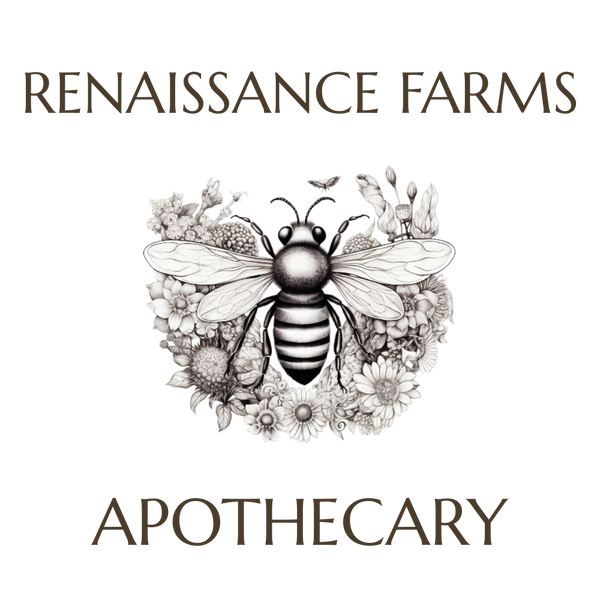Renaissance Farms
Echinacea (Root)
Echinacea (Root)
Couldn't load pickup availability
Echinacea, the "Purple Coneflower," is a cornerstone of both traditional and modern herbalism. While the entire plant holds great value, the root is considered the most potent and concentrated part, prized for its profound ability to support the body's core defenses. This monograph explores the unique properties of Echinacea purpurea root, offering a deeper understanding of its traditional uses, scientific actions, and energetic correspondences. You can download a copy to print with your purchase.
Botanical Information:
-
Botanical Name: Echinacea purpurea
-
Common Names: Purple Coneflower, American Coneflower
-
Description: The root of Echinacea purpurea is a fibrous, dark brown to black taproot. It is the powerhouse of the plant, storing a rich concentration of compounds that give it its signature actions and distinct, pungent taste.
Energetics & Taste:
-
Energetics: Cool, Dry, Pungent
-
Taste: Pungent, slightly sweet, and numbing. The characteristic tingling sensation on the tongue is a sign of its active constituents.
Key Constituents: The root is particularly rich in alkylamides (which cause the tingling sensation), polysaccharides, and caffeic acid derivatives like echinacoside. These compounds work synergistically to provide the root's well-known benefits.
Traditional Uses: Echinacea root has been a sacred medicine of numerous Native American tribes for centuries, used to support the body during times of illness and to soothe irritations. In Western herbalism, it is primarily used to:
-
Support the immune system's function, especially during times of acute need.
-
Encourage lymphatic flow and detoxification.
-
Help the body maintain its healthy inflammatory response.
Herbal Actions:
-
Immunostimulant: Enhances the activity of immune cells, helping the body defend against external stressors.
-
Alterative: Helps to "alter" the body's metabolism and support the natural processes of elimination, contributing to deep cleansing.
-
Antimicrobial (mild): Possesses compounds that may help inhibit the growth of certain microorganisms.
-
Sialagogue: Stimulates the production of saliva, which is thought to be a sign of its broader systemic action.
Preparation:
-
Decoction (Tea): For roots, a decoction is more effective than an infusion. Simmer 1-2 teaspoons of dried root in 8-10 ounces of water for 15-20 minutes, then strain.
-
Tincture: The most common and effective way to use echinacea root is as a concentrated liquid extract.
-
Capsules: The powdered root can be encapsulated for convenient use.
Planetary & Metaphysical Correspondences:
-
Planetary Associations: Mars and the Sun. Mars governs energy, defense, and the body's fighting response, while the Sun represents vitality, life force, and strength.
-
Metaphysical/Magical Correspondences: Echinacea is associated with strength, resilience, and protection. It can be used in rituals for grounding, reinforcing personal boundaries, and fortifying one's spiritual defenses against negative energies. Its deep root symbolizes a connection to the earth and the ability to draw strength from deep within.
Sourcing: This echinacea root is sourced from carefully cultivated plants, ensuring a consistent, ethical, and high-quality product.
Cautions & Contraindications: Echinacea is generally considered safe for most people. However, those with autoimmune conditions or taking immunosuppressant medications should consult a healthcare professional before use. Prolonged, continuous use is not recommended by all herbalists; some suggest using it intermittently or for specific periods.
Disclaimer: This monograph is for educational purposes only and has not been evaluated by the Food and Drug Administration. This product is not intended to diagnose, treat, cure, or prevent any disease. Consult with a qualified healthcare professional before using any herbal products, especially if you are pregnant, nursing, or taking any medications.
Share


